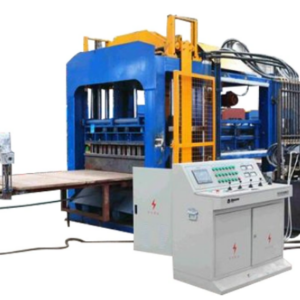The frequency of routine maintenance and cleaning for a block making machine can vary depending on several factors, including the machine model, usage intensity, operating conditions, and the manufacturer’s recommendations.
However, here are some general guidelines to consider:
Daily Cleaning: Certain cleaning tasks should be performed on a daily basis to keep the machine in good working condition. This includes removing any residual concrete or debris from the moulds, hopper, conveyor, and other components. Cleaning the machine after each use helps prevent the buildup of hardened concrete, which can affect the machine’s performance.
Weekly or Bi-Weekly Maintenance: Conducting more detailed maintenance tasks on a weekly or bi-weekly basis can help identify and address any emerging issues. This may involve inspecting and lubricating moving parts, checking belts and chains for tension and wear, and verifying the alignment of the moulds and components. Additionally, cleaning the mixing system, vibration system, and hydraulic system thoroughly can help prevent blockages and ensure smooth operation.
Monthly or Quarterly Maintenance: Schedule monthly or quarterly maintenance sessions to perform more extensive checks and maintenance tasks. This includes inspecting and adjusting the machine’s electrical connections, checking the condition of hydraulic hoses and fittings, and verifying the accuracy of sensors and control systems. Lubrication of bearings, greasing of moving parts, and replacement of worn-out components should also be considered.
Manufacturer’s Recommendations: It is important to refer to the manufacturer’s manual or guidelines for specific maintenance instructions and recommended intervals. Manufacturers often provide detailed maintenance schedules and procedures tailored to their machine models. Adhering to these recommendations ensures that the machine is properly maintained and serviced according to the manufacturer’s specifications.
Remember, the operating conditions and usage patterns of the block making machine can vary. If the machine is subjected to heavy usage or operates in harsh environments, more frequent maintenance and cleaning may be necessary. Regular inspections and attentive monitoring of the machine’s performance will help identify any signs of wear, damage, or issues, allowing for timely maintenance and repairs.
Ultimately, establishing a regular maintenance routine and adhering to the manufacturer’s guidelines will help maximize the lifespan, efficiency, and reliability of the block making machine.
What are some common signs of wear or damage that I should look out for during inspections?
During inspections of a block making machine, it is important to watch for signs of wear or damage that may affect its performance or safety.
Here are some common signs to look out for:
Worn or Damaged Moulds: Inspect the moulds for signs of wear, such as cracks, chips, or excessive erosion. Damaged moulds can result in poorly formed blocks or bricks and may need to be replaced or repaired.
Excessive Vibrations: Pay attention to any unusual vibrations or excessive shaking during the operation of the machine. Excessive vibrations can indicate misalignment of components, loose fasteners, or problems with the vibration system, which should be addressed promptly.
Leaks or Fluid Drips: Check for any leaks or fluid drips in the hydraulic system. Leaking hydraulic hoses, fittings, or seals can lead to reduced performance or even equipment failure. Address any leaks immediately and replace or repair the affected components.
Loose or Worn Belts and Chains: Inspect the belts and chains that drive the machine’s moving parts, block making machine such as the conveyor or mould system. Look for signs of wear, stretching, or loose tension. Replace or adjust worn or loose belts and chains to ensure proper operation.
Electrical Issues: Check the electrical connections, wiring, and controls for any signs of damage or loose connections. Watch for flickering lights, malfunctioning switches, or abnormal behavior of the control system. Electrical issues should be addressed by qualified personnel to prevent safety hazards or machine malfunctions.
Excessive Wear on Moving Parts: Inspect the moving parts, such as bearings, shafts, and gears, for signs of excessive wear or damage. Look for unusual noises, grinding, or rough operation. Lubricate the moving parts as recommended by the manufacturer and replace any worn-out components.
Clogged or Dirty Components: Check for any clogged or dirty components that can affect the machine’s performance. This includes inspecting the hopper, conveyor, mixing system, and discharge area for any blockages or buildup of concrete or debris. Clean or unclog the components as necessary.
Irregular Block Production: Monitor the quality and consistency of the blocks or bricks produced by the machine. Look for signs of irregular shapes, poor compaction, or inadequate curing. These issues may indicate problems with the mixing system, vibration system, or moulds.
Regular inspections and attentive monitoring of the machine’s performance will help identify any signs of wear, damage, or issues promptly. It is important to address these issues promptly to prevent further damage, ensure safe operation, and maintain the machine’s efficiency and longevity.

